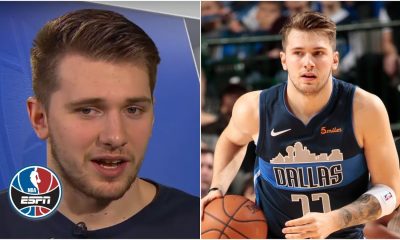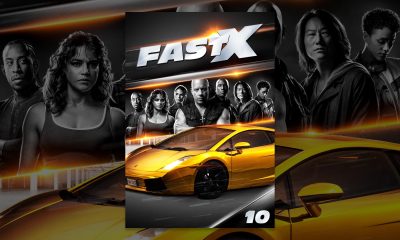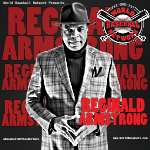NIL
How creative activation unlocks sports marketing effectiveness
It is often the case in sports marketing that the most effective partnerships are also the most creative in their execution. When it comes to delivering impact through sports sponsorship in particular, creativity and effectiveness go hand in hand. Sponsorship, as part of the overall marketing mix, sits somewhere between those two interconnected axes, depending […]

It is often the case in sports marketing that the most effective partnerships are also the most creative in their execution.
When it comes to delivering impact through sports sponsorship in particular, creativity and effectiveness go hand in hand. Sponsorship, as part of the overall marketing mix, sits somewhere between those two interconnected axes, depending on the sponsoring brand’s objectives, and its value can only really be judged on a case-by-case basis.
Over time, however, approaches to sports sponsorship have become increasingly scientific and sophisticated. Across the industry, advanced brand tracking tools, real-time measurement platforms and analytical insights are now widely used to inform strategy amid a growing emphasis on delivering business outcomes and proving ROI. This focus on data-led, objective performance is hugely important for brands investing significant sums in sports marketing, yet the role of creativity in driving value through sponsorship cannot be overstated.
Unlocking value through creativity
Today, an entire creative industry has grown up around sports sponsorship activation. Populated by creative and experiential agencies, production studios and talent managers, it exists to bring partnerships to life through compelling content and culturally relevant campaigns. Its overarching aim is to produce work that not only cuts through but also, most importantly, generates commercial value for brands and rights holders.
For those who operate in this space, sports marketing represents a form of creative art. Though a business that is intended to deliver against corporate objectives, it views sponsorship, at its core, as the expression of an idea, one which manifests in myriad different ways but consistently permeates the messaging and activation.
“At the end of the day, we are in a business, and a business wants to see results,” says Matt Hunt, executive strategy director at Manchester-based creative agency MATTA. “But I think it’s about what is the most effective way of achieving those? And often it’s creativity that unlocks that.”
Any brand worth their salt will enter a partnership with clear objectives in mind. It could be that they want to grow brand awareness, boost purchase consideration or drive direct sales – or, as is often the case, a mixture of all three, plus many potential others depending on the brand’s specific goals. But when brands rely too heavily on metrics alone, there is a risk the data ends up dictating creative direction rather than informing it.
“I think that the value of creativity in this space is sometimes overlooked,” continues Hunt, whose company works with the likes of the ATP, England Rugby, Clinique and Emporio Armani. “People are buying rights without necessarily maximising the value that they can take from them. And it is simply a badging exercise, which I think, for us, is dramatically underplaying the potential value that you could achieve through thinking about what you’ve got, how it aligns with your brand, with your objective, with the entity that you’re sponsoring, and activating that in a way which does engage and delight.”
Michelob Ultra’s creative, tech-led activations, such as its DreamCaster work featuring blind basketball fan and aspiring broadcaster Cameron Black, have earned the beer brand widespread marketing plaudits and delivered meaningful results
Viewed through the prism of creative effectiveness, sports sponsorship need not be measurable to be truly meaningful, says Hunt. For brand marketers under internal pressure to rationalise their spending decisions, there must naturally be a business case behind any sponsorship investment, with performance tracked according to identifiable KPIs. But in the minds of fans, marketing effectiveness really boils down to emotional impact and cultural relevance.
“We do feel that there is a possibly a lack of creativity in how some sponsorship is applied and activated,” adds Hunt, “and more just about marketing by numbers, rather than really taking the time to think deeply about how we are genuinely going to make an impact that people may possibly remember beyond simply our logo being on a shirt or on this LED board.”
Indeed, quantitative data seldom paints the full picture. Traditional measures of success, such as brand affinity, purchase consideration and social media engagement, provide only a limited view of marketing effectiveness. Often, it is the intangible, less easily quantifiable measures that reveal most about the performance of a partnership.
“The more unexpected it is, the more it will cut through creatively,” insists Hunt. “When something’s unexpected, a consumer brain opens up to take in new information, and it also becomes more remarkable, I think, on that basis as well.
“So the more unexpected you can make the partnership, but give it authentic meaning at the same time, that’s the perfect alchemy for making sports sponsorships work as hard as they possibly can.
“The power of the unexpected and the ability to disrupt is something that has to be grasped and utilised, and that only comes with a degree of creativity and flair in its execution.”
Some of the best work in sports marketing is indeed born of unconventional ideas or atypical collaborations. On the surface, a women’s skincare brand isn’t a natural fit for rugby, while an agricultural tyre manufacturer based in India doesn’t sit comfortably in European club basketball. Yet partnerships that appear incongruous at first glance are rarely ever random acts of marketing. On the contrary, they are often those which are underpinned by the soundest strategic rationale.
“I think that’s one of the powers of brands showing up in sport,” says Hunt. “It can be more remarkable if it isn’t naturally something that you would put together. Finding meaning in putting these two rather disparate things together is where the magic happens.
“If you create something that engages your audience in a way that they’re enthralled by, or taken aback by, that is ultimately going to be more effective than just simply creating visibility and awareness for something which doesn’t really have a sense of meaning behind it.”

MATTA’s ‘Powered Differently’ campaign – produced in collaboration with Premiership Women’s Rugby and Getty Images – was 100% powered by women, from the ideation and creative direction to the photography and curation.
Embrace the third space
“We really think about how we can become part of fans’ everyday life and part of fan culture,” says Alexander Michaelsen, executive creative director and board member at Jung von Matt SPORTS, a Hamburg-based agency whose brand client portfolio includes everyone from Adidas and BMW to Fanatics, Google Pixel and Spotify. “So what do they consume? How do they spend their day? How do they spend their match day? What’s the journey? And how can we be part of that journey in a way that complements, that makes it better, and doesn’t distract from what they want to consume?
“When talking to fans, you only get one chance as a brand to really hit it home and to set yourself up to become hopefully a loved brand. But there are also huge mistakes you can make if you don’t speak the lingo or if you don’t respect the culture, especially in Europe.”
Nowadays, so much of sports consumption happens in the so-called ‘third space’ – non-traditional channels and mediums including, but not limited to, social media platforms, online chat forums, WhatsApp groups, watch parties and live streams. In the third space, content is disseminated, dissected and debated organically in disintermediated discussions, filtered through the lens of discerning fans. Here, every piece of content has the potential to take on a life of its own, beyond the control of any publisher, and in the court of public opinion, of course, everything is open to interpretation.
Brands must earn the right to play in this subjective, ever-evolving and fragmented third space, bringing something that is authentic and additive, not intrusive and overengineered. In a world where feedback is constant, immediate and unfiltered, sentiment means everything. Reading the room is therefore paramount when gauging the impact of any creative output.
“The good thing about most of our campaigns is that they, in some shape or form, happen on social media, and you get a direct response,” says Michaelsen. “I often think this sentiment is as important as the facts and numbers behind it that you can measure, because people on social media may hate, they may love, but they don’t lie.
“They are brutally honest – and if you are doing a shit job, you get shit feedback. That’s the reality.”
@tobiasdahlhaus Gave the @Skoda UK Draw de France Strava challenge a go. Might not be the prettiest car in the world but at least you know it is one. Elapsed duration – 2h44 Elapsed distance – 68km #drawdefrance #stravaart #gpsart ♬ Ms. Jackson (Instrumental) – Outkast
Skoda’s ‘Draw de France’ activation around last year’s Tour de France engaged cyclists through Strava, encouraging them to get creative while driving participation
While social media heightens scrutiny and therefore increases the potential for reputational risk for sponsor brands, it can also lead to greater rewards.
Earned media coverage may be a traditional measure of success in marketing but in the fast-paced, memeified world of the third space, virality is now the holy grail. Bold ideas executed via riskier campaigns invariably cut through, for better or worse, and brands who are willing to step outside their comfort zone stand to benefit.
It is a cliché to say fortune favours the brave but dull ads are said to cost the marketing industry millions of dollars in additional media spend. In sponsorship as in traditional advertising, it is often the case that ambitious ideas fly, whereas conservative ones require far greater expenditure – normally on paid media – just to get off the ground. As Hunt analogises: “You can put lipstick on a pig, but it’s still a pig.”
In that sense, audience understanding is key. That is perhaps marketing 101 but in the highly pressurised, hyper-critical world of sport, with its minefield of fan allegiances and tribalist mentality, the adage rings particularly true.
Creating impactful, emotionally resonant campaigns that capture the cultural zeitgeist and get people talking requires a willingness to constantly listen and adapt. Often, the strongest ideas are rooted in insight. Recent research by Lions Advisory found that brands with stronger insight development respond more effectively to cultural moments. Yet while online behaviour tracking and social media sentiment analysis can surface valuable real-time data, brands and agencies must be ready to conduct and act upon in-depth qualitative research as well.
“Every single thing that we do, every brief that we do, we will collaborate with fans on,” says Simon Luff, head of strategy at Ear to the Ground. “We’ll talk to those fans. We’ll understand what’s moving culture and how brands can show up in that culture in a way that’s really authentic and additive, rather than parasitic.
“I think having fan insight at the heart of every single decision – every creative decision, every strategic decision – and actually bringing fans into that creative process, is the way to really build more impactful collaborations.”
Crossover collaborations like FC Barcelona’s partnership with Spotify have huge cut-through potential, leveraging the reach and influence of two brands to engage a wider audience
Understanding what drives fan passions is crucial, particularly in the third space, says Luff. Utilising first-hand feedback enables brands to keep their finger on the pulse and connect “at a much deeper level”, he adds: “I think also having an acute understanding of how sport is merging and morphing into other worlds – into music, into fashion, into art, and into all of these other different cultural crossovers – enables you to play at the edges.”
But fan insight not only informs sponsorship strategy – it also helps shape the creative process for the agencies tasked with plotting activations.
As its name suggests, Ear to the Ground prides itself on listening to target audiences above anyone else. Its ‘fans to consumers’ approach has been built on an intelligence network of 12,500 sports, gaming and entertainment experts around the world, comprising a mix of fans, creators, influencers, producers, community leaders and business owners. The company has also developed proprietary AI-powered tools and specific methodologies to monitor cultural insights, analyse and foresee trends, test creative ideas, and ultimately enable its clients to make faster, more effective decisions.
“From there we’ll start thinking about how that strategy will then manifest through the third space: the types of formats, the type of talent that we might work with, and creators that we might work with in order to create the right types of content to connect with fans,” explains Luff. “That creative process will then bring the fans back in, and we’ll start co-creating with the fans as well. So we’ll test ideas and concepts with them born off that initial insight, and we’ll use that as a way to refine our creative development and ideation.”

Ear to the Ground was the creative agency behind Paris Saint-Germain’s Snipes Deck, a branded hospitality and experiential space at the Parc des Princes complete with DJ sets, local cuisine and a barber service
Creativity within constraints
Creativity, in the context of sponsorship, comes in many forms. The creative output invariably garners most of the attention, but that is not the only factor which sets great activations apart. Sometimes the best and most original work is produced when creative minds are forced to think, well, creatively.
Budweiser’s brilliant Bring Home the Bud campaign during the Qatar 2022 Fifa World Cup, where the consumption of alcohol was banned on the eve of the tournament, provides a high-profile case study for how brands, working closely with a partner agency, can turn a negative situation into a positive one if they are able to stay agile and reactive. But there are countless other examples of genuinely innovative work being produced when those involved are constrained by, say, restrictive commercial rights or budget limitations, or perhaps backed into a corner by timing or circumstance.
“Often the best ideas happen when you’re with the back against the wall and everything is against you,” says Michaelsen, who notes how smaller budgets, in particular, force creatives to think differently. “You just have to build the confidence in your own capabilities, surround yourself with good people and a good team, and stay close to your client.”

Budweiser’s ‘Bring Home the Bud’ campaign during the Qatar 2022 Fifa World Cup delivered a masterclass in crisis management and drove massive worldwide engagement on social media
According to Michaelsen, belief in the creative process is vital for sponsorship success. Brand-agency relationships must be built on trust, he says, and creative tension can lead to better results if the relationship is open and strong enough to withstand some friction. That dynamic is key to maximising the power of sponsorship, enabling brands to overcome marketing challenges and ultimately produce the most impactful work.
“We are the experts in the field of sports marketing and often a brand comes in that isn’t too familiar with that field, because maybe it’s their first sponsorship or partnership,” says Michaelsen. “So really challenging the brief and setting it up for success is the first crucial step. For us as an agency, often it’s not finding the answers, it’s finding those questions that deliver the answers.
“Being brave enough to open the doors to your process and let the client come in, I think, is important in a time where timings get shorter, budgets get tighter, and you can’t allow to do too many feedback loops that will then end up in some compromise that no one really likes.
“Often, as a creative, you want to protect your ideas as long as possible, to really make them shiny and perfect. But this is really where you have to build confidence and have to be also a good salesman to your client so that they trust you, so that this maybe unpolished idea can turn into something beautiful.”
Produced by SportsPro in collaboration with SportQuake, Impact X is a new annual initiative spotlighting the most impactful, creative and effective partnerships in sport. Click here to find out more.


NIL
The Journey of Nebraska Football Jacob Bower
In an era where college football is increasingly defined by transfer portal headlines and NIL deals, Jacob Bower’s story cuts through the noise with raw authenticity. A former walk-on who once paid his way just to be part of the Nebraska program, Bower has transformed himself into a scholarship linebacker and a symbol of everything […]

In an era where college football is increasingly defined by transfer portal headlines and NIL deals, Jacob Bower’s story cuts through the noise with raw authenticity.
A former walk-on who once paid his way just to be part of the Nebraska program, Bower has transformed himself into a scholarship linebacker and a symbol of everything the Huskers hope to build under head coach Matt Rhule. His journey, from scout team reps to spring standout, isn’t just a feel-good tale. It’s a blueprint for the kind of player development that still matters in Lincoln.
Bower’s rise from walk-on to scholarship linebacker at Nebraska is the kind of story that reminds fans why they love college football. At just 10 years old, Bower wasn’t chasing tackles; he was singing in a traveling church choir. But during a performance stop at Memorial Stadium, something shifted.
Bower fell in love with Nebraska football, planting the seed for a journey that would one day bring him back, not as a visitor, but as a linebacker.
The Rancho Santa Margarita, California, native had a full ride waiting at Army, with the chance to play rugby and earn a free education. But the pull of Nebraska was stronger. He turned down certainty for a shot at something bigger, walking on in Lincoln and footing the bill himself, all to chase a dream that started in the stands of Memorial Stadium.
Jacob Bower walked on to Lincoln in 23 to little fanfare,using a RS & developing he continued 24 by playing in 6 games!Getting better every day Bower in 25 has earned a scholarship and will surprise fans this season & has a big future ahead!We are 54 days out til Husker Kickoff! pic.twitter.com/yeNxcgvUQp
— Tyler Pedersen (@TylerSPedersen) July 5, 2025
After piling up 174 tackles, 6.5 sacks, and 4 interceptions over his final two seasons at Santa Margarita Catholic High School, Bower arrived in Lincoln in 2023 as a walk-on determined to earn his place in the Huskers’ locker room. Capping off his senior season, Bower earned a spot in the Orange County All-Star Game, where he earned recognition as one of the game’s top defensive performers.
After redshirting in his first season at Nebraska, Bower saw action in six games during the 2024 season, making his Husker debut against UTEP. He logged his first career tackle in the win over Northern Iowa, quietly beginning to carve out a role on Nebraska’s special teams and defensive depth chart.
Bower’s relentless drive and breakout spring showing in 2025 didn’t go unnoticed. During a routine practice, Rhule halted the action to deliver a moment that would redefine Bower’s journey, awarding him a scholarship in front of the entire team.
Next. Nebraska Football Season Central. Nebraska Football Season Central. dark
Bower’s path to a Nebraska scholarship wasn’t paved with headlines or shortcuts. From choir kid to walk-on to game-changer, his story is a reminder that in Lincoln, heart still matters. For the Huskers, Bower isn’t just a player; he’s proof that the dream is still alive.
Nebraska Football 2025 Schedule
Home games are bolded. All times central.
Stay up to date on all things Huskers by bookmarking Nebraska Cornhuskers On SI, subscribing to HuskerMax on YouTube, and visiting HuskerMax.com daily.
NIL
Pay to Play: College Baseball and the NCAA’s New Economy of Visibility
About 6 minutes reading time. Reginald Armstrong | Aug 12th, 2025 10:55pm EDT Apparently, a judge—Claudia Wilken—has ruled that NCAA Division I universities can now be legitimate modern-day Robin Hoods and pay “student” athletes. On June 6, 2025, she approved the House v. NCAA settlement—a federal court decision that fundamentally reshapes the NCAA’s amateurism model. […]
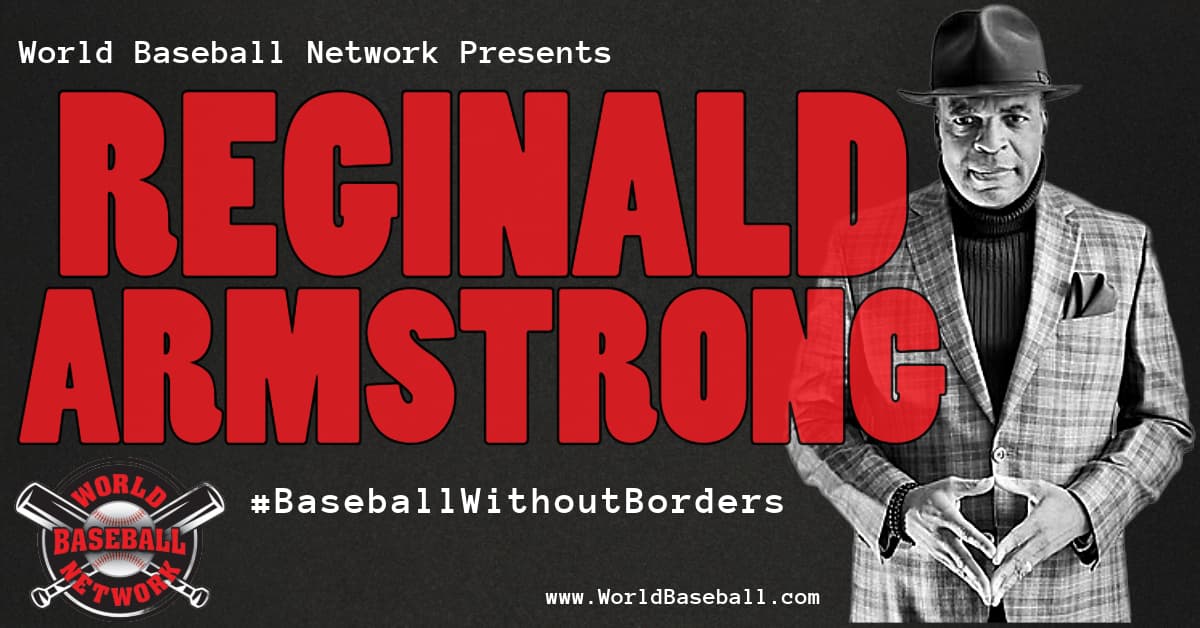
Reginald Armstrong | Aug 12th, 2025 10:55pm EDT

Apparently, a judge—Claudia Wilken—has ruled that NCAA Division I universities can now be legitimate modern-day Robin Hoods and pay “student” athletes. On June 6, 2025, she approved the House v. NCAA settlement—a federal court decision that fundamentally reshapes the NCAA’s amateurism model.
No more scholarship caps. A new structure for revenue-sharing. And perhaps most notably: the creation of a Name, Image, and Likeness clearinghouse for NIL deals exceeding $600—for transparency, of course.
As an additional development in the House v. NCAA settlement, attorneys have now agreed to allow NIL collectives to exceed the proposed $20.5 million revenue-sharing cap—provided deals meet a loosely defined “fair market value” threshold. This adjustment effectively softens the cap and reopens the door for high-dollar NIL arrangements, particularly among power programs with deep-pocketed boosters.
The payout? $20.5 million per school annually. How that sum gets divvied up remains unclear—I haven’t drilled down into the particulars. But let’s not kid ourselves: the lion’s share will likely be funneled toward college football and men’s basketball.
Still—college baseball is stirring. With the 2025 College World Series freshly concluded and the transfer portal buzzing like a switchboard, this offseason isn’t idle—it’s ideological. NIL valuations, roster reshuffles, and coaching chess moves now rival the MLB draft in drama. LSU, Arkansas, and Texas A&M are stacking talent like hedge funds stack assets. We’ve entered an era where a pitcher’s arm comes attached to a media strategy.
Just look at the decisions being made now—
Dylan Loy
A lefty who pitched in Tennessee’s CWS finals and SEC title game, Loy opted to transfer to Georgia Tech rather than go pro—likely weighing brand development and NIL upside against draft uncertainty.
Gavin Kash
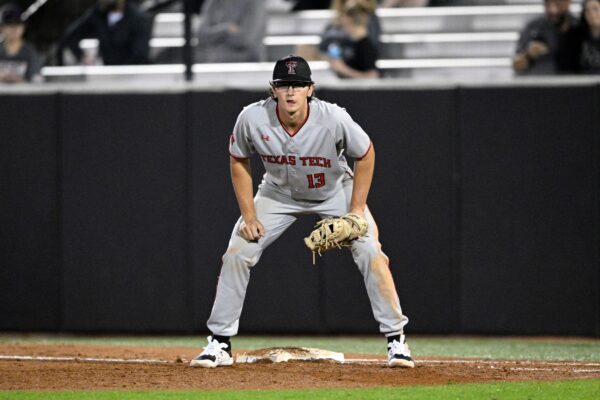
#image_title
One of college baseball’s top sluggers with 41 career home runs, Kash remains unsigned, evaluating portal offers with six-figure NIL implications.
Brady Neal
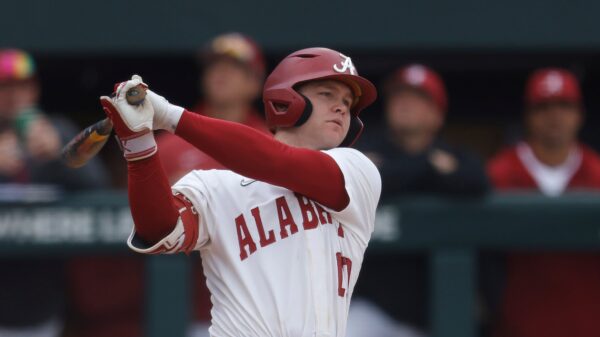
LSU’s promising catcher, entered the portal post-surgery and has since committed to Alabama. His stat line (.276/.408/.578 with 9 HRs) suggests future draft appeal—but his decision to stay collegiate ensures medical recovery, visibility, and a fresh start under Alabama’s rebuild.
Zach Root
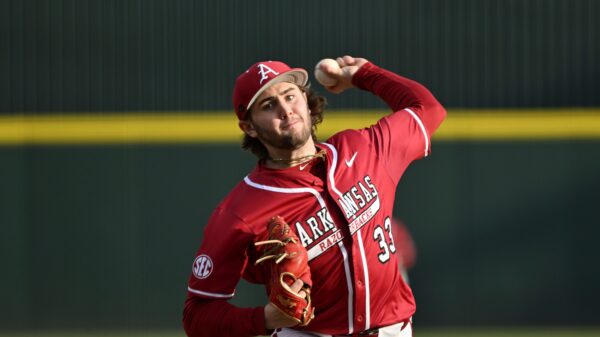
Arkansas pitcher Zach Root (33) throws a pitch against Washington State during an NCAA baseball game on Friday, Feb. 14, 2025, in Fayetteville, Ark. (AP Photo/Michael Woods)
East Carolina’s lefty ace, transferred to Arkansas after injury rather than jump into the 2025 draft—presumably to reset valuation through performance and pitch under the spotlight of SEC competition.
Jason Torres
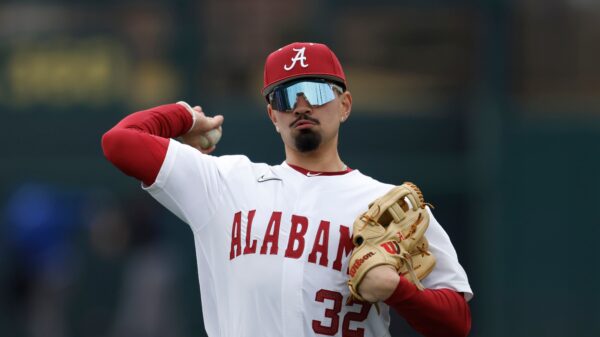
Miami’s injured first baseman committed to Alabama—choosing legacy rebuild over uncertain draft slotting.
Conner O’Neal
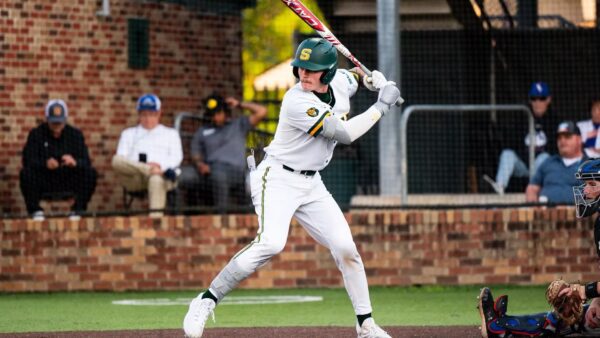
A senior catcher drafted in the 9th round by the Dodgers, O’Neal received a paltry $2,500 signing bonus. Meanwhile, unsigned collegians are fielding NIL deals at ten to forty times that. It’s a reversal of the path once considered inevitable.
These aren’t isolated cases. They’re proof points. College isn’t just a stop on the way to the majors—it’s a strategic platform, and sometimes, the more prosperous one.
That in turn reawakens the longstanding tension around Title IX, as questions of equitable access and compensation intersect with economic realities. Revenue sports will drive the bulk of distribution. But fairness? That depends on who’s holding the purse—and the mic.
Even Dabo Swinney, Clemson’s Head Football coach and a symbol of collegiate consistency, recently dismissed the playoff structure as doomed to “blow up in five years.” His frustration didn’t end there—it echoed the silent groan of coaches and traditionalists who see NIL, the portal, and the new power dynamics as a departure from collegiate soul, not an evolution.
And I get it. I’ve long believed that athletes—true student-athletes—deserved stipends. Even a slice of their NIL. But now? Now we’re staring down a landscape where kids not old enough to legally toast a win in some states will earn more than seasoned professionals—teachers, lawyers, even broadcasters. When that level of income arrives before the diploma, it alters incentives and confuses identity.
The most troubling part? Athletes may now weigh whether to go pro at all. The path to prosperity for many was the draft. Suiting up at the highest level wasn’t just a dream—it was survival strategy. But now, campus can be more lucrative than rookie ball. College isn’t just a proving ground—it’s become a platform. And increasingly, a destination.
I still miss the voices of Keith Jackson and Chris Schenkel. I miss when athletes stayed four years on balance, honoring the name on the front of the uniform as much as the one on the back. When a college athlete’s story began at freshman orientation and didn’t end until graduation caps flew.
As a lifelong USC Trojan supporter since 1973, I remember when the band struck up “Conquest,” the cardinal-and-gold pageantry unfolded, and Saturdays felt like sacred ritual—rooted in rhythm, pride, and continuity. The culture wasn’t curated—it was lived.
Today? Athletes hop universities like we change socks. Only now, they’re paid—legally, openly, and no longer through booster laundering.
You might call this progress. You might call it overdue. But let’s not pretend there hasn’t been a cost.
Something rooted. Something rhythmic. Something undeniably collegiate has been quietly traded for something transactional.
And as college baseball recalibrates—with expanded rosters, NIL money chasing exit velocity and ERA, and players weighing pro dreams against collegiate branding—we stand at a threshold. If the game still wants heart, it will need storytellers, not just scouts. If it wants culture, it must frame the moments that echo—beyond bat speed and box scores.
We’ve entered the age of visibility economics. The question now is: What will we show—and what will we remember?
NIL
Bill Belichick era begins at UNC :: WRALSportsFan.com
Here with WRL sports executive producer Pat Welter, Mark Bergen, it’s double duty. WRL Triangle 2 and the WREL daily download. Pat, football season is days away. And the three triangle teams UNC, Duke, NC State, a ton of storylines. So I thought, what better way to preview the season than to do a draft […]
NIL
In-house collective, intellectual property, and asset protection
The “BBNIL Suite” is now officially the in-house collective for University of Kentucky athletics. Now run by JMI, this new agency will help athlete secure third-party NIL deals in addition to the rev-share payments that will be made by school. Kentucky has officially become one of the few schools to move a collective in-house. This […]

The “BBNIL Suite” is now officially the in-house collective for University of Kentucky athletics. Now run by JMI, this new agency will help athlete secure third-party NIL deals in addition to the rev-share payments that will be made by school. Kentucky has officially become one of the few schools to move a collective in-house.
This group’s top priority will be to negotiate deals, build athlete brands, and ensure every deal passes through the newly established NIL Go clearinghouse. Kentucky is moving everything under one roof and attempting to protect the brand.
“It gives us an opportunity so that our partners are somewhat protected, Kentucky athletic director Mitch Barnhart said on Tuesday. “The intellectual property, institutional property; it’s really important that if people want to use our marks, use our facilities for part of their endorsement property, that’s part of the deal. You come to the University of Kentucky and you’re part of our family and you get to use our things, but also that’s part of the relationship. There’s a responsibility and a right that comes with that.”
Subscribe to the KSR YouTube Channel for press conferences, interviews, original shows, fan features, and exclusive content.
This new collective will replace Club Blue as the official collective for Kentucky athletics. However, it will not be the only avenue for athletes to try and broker NIL deals. Barnhart says that UK players can try and get deals elsewhere but it will be tricky. The UK brand will not be available if they leave the BBNIL umbrella.
“Under the rules, they can still provide NIL opportunities. They would have to go through the range of compensation in NIL Go nationally like everybody else. We think that now if they do that, they probably wouldn’t have the IP rights and those kind of things. So we’re hopeful that as we go, we can sort of keep folks focused on what has been sort of our pathway forward. We have the financial responsibility in this new world that we’ve gotta take care of,” Barnhart said. “We gotta make sure that we protect both the folks that are in the program in terms of the sponsors as well as protect our student-athletes.”
“If a couple athletes decide to go off and do their own thing, it sort of hurts the entire team. The team is stronger together in everything you do. On the field and off the field. On the court and off the court. Your marketing value and those kind of things are better if you can do those things together. There’s lots of examples of that.”
Barnhart also specifically mentioned that BBNIL would strike some individual deals when needed, but to use the Kentucky brand, athletes will need to work directly with JMI. This is important because collectives are not going away anytime soon. The SCORE Act is a bill that codifies the House settlement and will provide national framework for NIL enforcement. This would give college athletics antitrust protection and could legitimately enforce “valid business purpose” rules upon booster-drive third-party collectives. However, it needs to pass first. Schools need collectives and rev-share payments to fund programs.
The athletic department is eliminating its successful third-party collective and handing the keys over to JMI in this historic deal. UK is all-in on this new NIL venture as the school adjusts to the rev-share era.
NIL
Preseason AP Poll: First Top 25 revealed ahead of 2025 College Football Season
The preseason AP Poll is here as the top 25 rankings were revealed ahead of the 2025 college football season. It’s time to gear up for the regular season. There are plenty of national championship contenders near the top of the AP Poll. This could very well be a wide open college football season. Without […]

The preseason AP Poll is here as the top 25 rankings were revealed ahead of the 2025 college football season. It’s time to gear up for the regular season.
There are plenty of national championship contenders near the top of the AP Poll. This could very well be a wide open college football season.
Without further ado, let’s dive into the AP Poll Top 25 ahead of kickoff. We start at the top!
Texas is geared up to win a national title this season with what they have at their disposal. Arch Manning steps in at quarterback and, arguably, he’ll be the most responsible.
Steve Sarkisian has led this program to the CFP semifinals twice but it’s time to take the next step. They’re all in to become kings of the college football world.
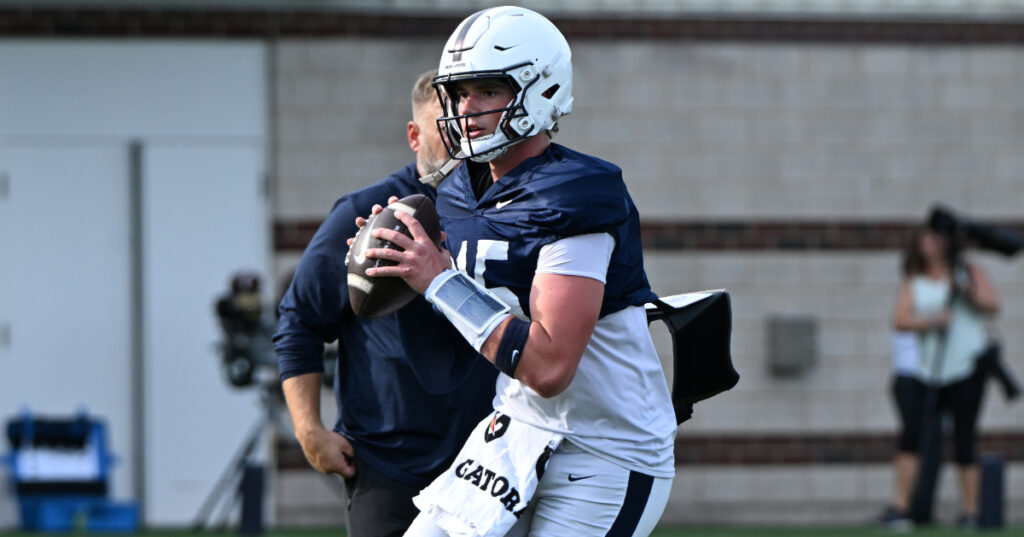
Penn State is running it back, similar to what Big Ten foe Ohio State did last season. Drew Allar leads the charge at QB and is aided by RBs Nick Singleton and Kaytron Allen.
On defense, Dani Dennis-Sutton headlines an elite defensive unit, as they’ll collectively replace Abdul Carter. The Nittany Lions are on the short list of national title contenders.
Ohio State comes in as the defending national champions but can they win back to back? Georgia did it recently of course, but the Buckeyes have to replace their QB.
Even with someone new like Julian Sayin under center, WR Jeremiah Smith can make him look like a superstar. On defense, DB Caleb Downs is back and captains a very solid defense, despite the unit losing NFL-talent to last year’s draft.
Dabo Swinney and Clemson returned to a large national spotlight last season with their most successful year in a few seasons. Winning the ACC and returning to the CFP was just the first step.
As far as how the AP Poll sees them, this will be a very competitive team that could climb its way to national title contender. QB Cade Klubnik is the de facto leader, but there are first round picks, potentially, on defense with Peter Woods and TJ Parker on the defensive line.
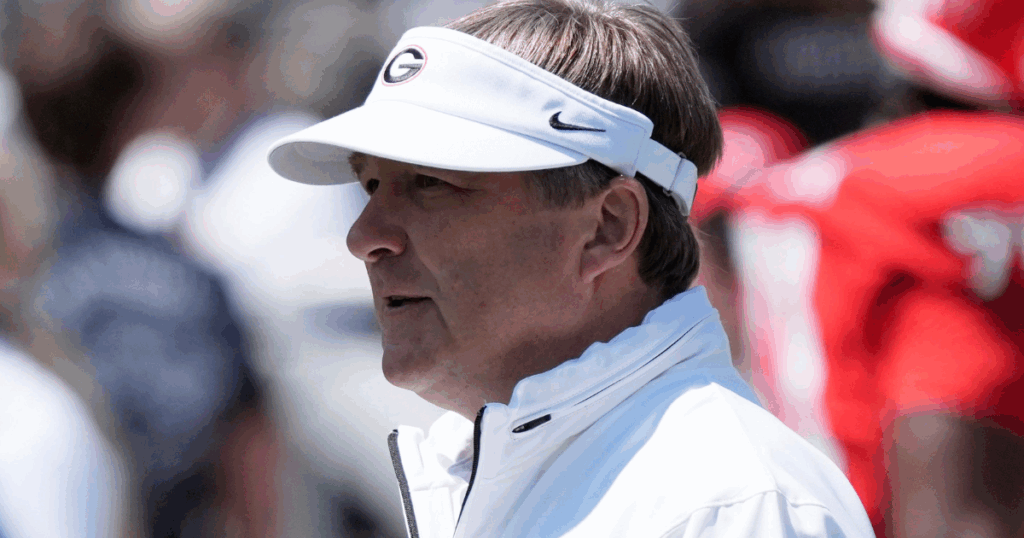
Georgia comes into the season, perhaps, more under the radar than in recent seasons. The AP Poll has them high up considering this team just won the SEC and had the No. 2 seed.
Kirby Smart is arguably the best coach in college football, so thinking this team’s time at the top is done would be foolish. But a lot hinges on Gunner Stockton at QB. Good thing he has new WR Zachariah Branch (USC transfer).
Marcus Freeman and Notre Dame nearly won it all last year. If that was the case, maybe this team could’ve been No. 1 in the AP Poll!
Still, RB Jeremiyah Love is back, and he’s a Heisman contender. The defense is veteran-heavy as well. They added DB transfer DeVonta Smith (Alabama).
Oregon had a massive opportunity to make a run for a national title last year, but were picked off by Ohio State in the CFP quarterfinals. Still, the Ducks went 13-0 and won the Big Ten.
Now how do you follow that up? Dan Lanning ushers in a new quarterback in Dante Moore, keeps attacking the recruiting trail and transfer portal and hopes it all breaks right. The AP Poll is a bit of a believer.
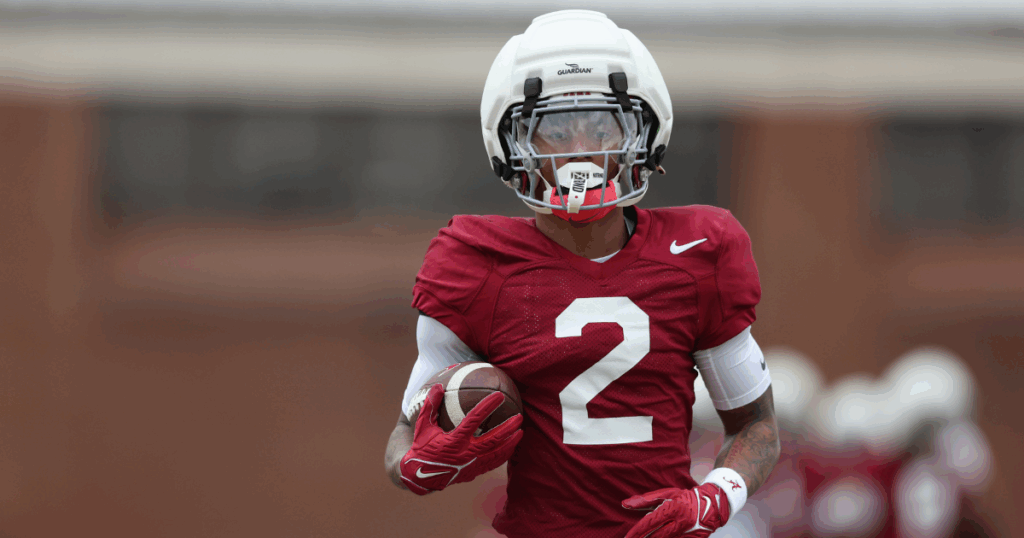
Year 1 for Kalen DeBoer and Alabama didn’t go as planned, not making the playoff and losing to Michigan in a bowl game. Still, DeBoer’s coaching prowess and development can’t be understated.
Ty Simpson is the expected QB and he has an all-star at WR in Ryan Williams to throw to. The defense is loaded with stars such as LT Overton. They’re back to SEC contender and have a chance to make a run in the CFP.
LSU gets preseason respect from the AP Poll and now it’s time to prove their worth. Brian Kelly goes into Year 4 with the Tigers and the CFP has to be the requirement right?
Garrett Nussmeier is back at QB and is firmly in the Heisman Trophy race. Harold Perkins, should he return to form, could be one of the best linebackers in the country.
Miami fell short last season with some missed opportunities to get to the ACC title game. To be fair, they had a little bit of Lady Luck on their side as well.
Carson Beck transferred in to replace Cam Ward at QB. That’ll be the biggest spotlight in Coral Gables this season. Mario Cristobal has a lot of talent at his disposal and the College Football Playoff should be the minimum.
Preseason AP Poll: First Top 25 revealed
11. Arizona State
12. Illinois
13. South Carolina
14. Michigan
15. Florida
16. SMU
17. Kansas State
18. Oklahoma
19. Texas A&M
20. Indiana
21. Ole Miss
22. Iowa State
23. Texas Tech
24. Tennessee
25. Boise State
Others receiving votes: BYU 156, Utah 144, Baylor 132, Louisville 90, Southern Cal 64, Georgia Tech 63, Missouri 33, Tulane 23, Nebraska 23, UNLV 21, Toledo 13, Auburn 10, James Madison 9, Memphis 9, Florida St. 8, Duke 6, Liberty 5, Navy 5, Iowa 5, TCU 4, Pittsburgh 3, Army 2, Colorado 1, Louisiana-Lafayette 1.
NIL
Middle, high school athletes can now get NIL deals in West Virginia
-

 Technology2 weeks ago
Technology2 weeks agoAlly Runs New Game Plan in WNBA All-Star Rookie Debut
-

 Health2 weeks ago
Health2 weeks agoThe Women Driving A New Era In U.S. Ski & Snowboard
-

 High School Sports3 weeks ago
High School Sports3 weeks ago100 days to men's college basketball
-

 NIL2 weeks ago
NIL2 weeks agoESPN Announces 'dont wait run fast' by mgk as New College Football Anthem for 2025
-

 College Sports3 weeks ago
College Sports3 weeks agoBYU Basketball Adds Aleksej Kostic to 2025
-

 College Sports2 weeks ago
College Sports2 weeks agoCity rows to sporting destination goal on boats of new complexes & old strengths
-

 Health3 weeks ago
Health3 weeks agoTrump administration investigates Oregon's transgender athlete policies
-
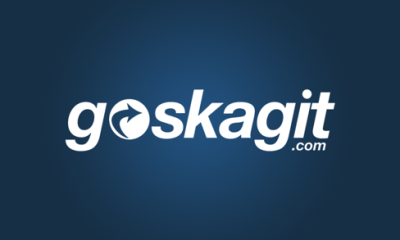
 Sports2 weeks ago
Sports2 weeks agoNtekpere honored as Second Team Academic All-American | APG State News
-

 Rec Sports7 days ago
Rec Sports7 days agoSwimming & Diving Comments on the Rules – 2025-26
-

 Technology1 week ago
Technology1 week agoAmid Sports Chaos, ‘Known’ Data and Outcomes Help Agency Win




















